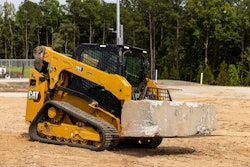
New business volume dipped 7% in May to $10.2 billion, according to the Equipment Leasing and Finance Association’s Monthly Leasing and Finance Index, which reports economic activity for the $1 trillion equipment finance sector.
Overall new business volume continues to show "solid performance with double-digit year-over-year growth," ELFA President and CEO Leigh Lytle said. Despite the dip, results are still up 11% from the same period last year, and year-to-date cumulative new business volume increased 6% compared to 2023.
Commenting on the results, Lytle added, “Credit quality is mixed, but within historical norms. The drop in volume from April could be an indication that some businesses are holding off on acquiring equipment until interest rates come down. We’ll be monitoring whether the effect of higher rates over the summer and into the fall will further delay equipment investments, which would be a headwind to economic activity through the second half of the year.”
Receivables over 30 days were 2.3%, up 2% from the previous month and up 2% compared to the same period in 2023, according to the ELFA report.
Charge-offs were unchanged from the previous month at 0.4%, and up from 0.3% compared to the same period last year. Credit approvals were also unchanged from last month at 75%.
Total headcount for equipment finance companies was up 1.5% year-over-year.
The Association says its Monthly Confidence Index for June remains steady at 50.2, compared to 50.7 in May.
Dave Lyder, EVP and group manager, Ascentium Capital, said, “We expect to see solid, yet temperate demand for equipment financing through 2024. Small businesses are getting accustomed to higher-for-longer rates and higher equipment prices due to inflation. However, some are pausing any new investments for now. So, lenders need to remain vigilant, not overstepping in challenged areas while, instead, focusing capital allocation toward areas where they expect the best returns. Small businesses remain very resilient. Though with higher rates and stubborn inflation, this is a time for lenders to lean further into their roles of providing practical advice to help clients make the most strategic financial choices.”










